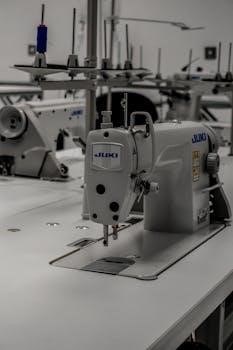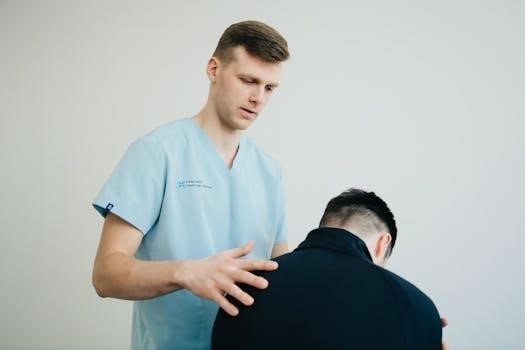
Power seats offer great convenience, but when they fail, it can be frustrating. This guide explores methods for manually adjusting them, often involving a lever or handle under the seat, providing a temporary solution.
Understanding the Challenge
Moving power seats manually presents unique challenges compared to adjusting manual seats. Power seats utilize motors, cables, and gears for movement. These mechanisms are not designed for direct manual operation, and are significantly different from the tracks used in manual seats. Overcoming this requires understanding the internal workings, and the fact that there is no inherent manual override on many systems. This can be difficult.

Locating the Manual Override Mechanism
Many power seats include a manual override for emergencies. This is typically a lever or handle located beneath the seat. Look for labels or distinctive coloring for easy identification.
Identifying the Override Lever or Handle
The manual override mechanism is often a small lever or handle, sometimes labeled “Manual” or “Override,” located under the seat. It’s frequently colored red or orange for easy identification. It might be near the seat motor or frame. This lever is distinct from the usual power seat controls and is designed for manual adjustment when the electric system fails, enabling you to move the seat without power.
Where to Look Under the Seat
To find the manual override, slide the car seat all the way forward to create more space. Look for a lever or handle attached to the underside of the seat frame. This area typically houses the motors, cables, and gears for the power seat. The override is often situated close to these components, making it a good place to begin your search. Be careful when reaching under the seat to avoid any sharp edges or wires.
Using the Manual Override
Once located, the manual override mechanism allows you to adjust the seat without power. This usually involves engaging a lever or handle, and then manually moving the seat to the desired position.
How to Engage the Override Mechanism
Engaging the manual override typically involves locating a lever or handle, often found under the seat frame. Once found, firmly grasp the lever or handle. Some mechanisms might require you to pull it outwards or rotate it before you can begin manual adjustments. The lever might be labeled “Manual” or “Override” and may be a distinct color, like red or orange, to make it easier to identify.
Adjusting the Seat Position Manually
After engaging the override, you can manually adjust the seat. Depending on the mechanism, you might move the seat by pushing or pulling the lever. Sometimes, you can directly push the seat forward or backward while the override is engaged. The movement may require some effort, as you’re overcoming the internal mechanisms designed for powered operation. Move the seat slowly and steadily to your desired position, and avoid using excessive force.

Troubleshooting Common Issues
When manually moving a power seat, you might encounter difficulties. The seat could be stuck, hard to move, or only move partially. This section provides tips for addressing such problems.
Seat is Stuck or Difficult to Move
If your power seat is stuck, it’s often due to the internal mechanisms being jammed. Try locating and using the manual override lever, it may be difficult to access. If the override is hard to move, avoid forcing it. Check for any obstructions under the seat. Wiggling the seat or tapping gently can help to loosen it, proceeding with caution.
Wiggling and Tapping Techniques
When a power seat is stuck, gentle wiggling and tapping can help free it. Apply slight back-and-forth movements to the seat while trying the override lever. Use a rubber mallet to tap the seat rails and undercarriage gently. This can dislodge any obstructions, allowing the mechanism to move. Avoid excessive force, as it could cause further damage to the seat’s components.
Alternative Manual Methods
When the standard override fails, alternative techniques can be used. These include using a drill on specific mechanisms or applying direct pressure to move the seat manually, as a temporary fix.
Using a Drill for Temporary Movement
In some cases, a power drill can be used to manually move the seat. This involves carefully attaching the drill to the seat’s motor mechanism or screw drive under the seat. This method should be used with caution and only if you have a clear understanding of the seat’s mechanics, as improper use could cause damage. This method is a temporary solution, not a permanent fix.
Moving the Seat Manually With Direct Pressure
Applying direct pressure can sometimes help move a stuck power seat. This involves pushing the seat downwards while simultaneously trying to slide it forward or backward. This method might be effective if the seat is only slightly jammed. It requires considerable force, so be cautious not to damage the seat mechanism or injure yourself. This is a temporary measure.
When Manual Override Fails
If the manual override doesn’t work, check the power seat fuse. A blown fuse is a common issue. If that’s not the problem, it may be time to seek professional help.
Checking the Power Seat Fuse
When manual override doesn’t work, the first step is to check the power seat fuse. Consult your vehicle’s owner’s manual to locate the fuse box and identify the specific fuse for the power seats. Use a test lamp to check if the fuse has a connection. A blown fuse is a common cause of power seat issues, and it might be a simple fix. Replacing the fuse may restore the power to the seat.
Considering Professional Help
If manual override attempts and fuse checks fail, it might be time to consider professional help. A certified auto technician, specializing in electrical systems, can diagnose more complex issues. They have the tools and expertise to determine if the problem is with the motor, wiring, or other components. A professional can also provide a permanent solution and avoid causing any further damage to your vehicle’s system.
Understanding Power Seat Mechanisms
Power seats use motors, cables, and gears to adjust position. These mechanisms are complex and can make manual movement difficult if the power system fails, requiring alternative methods.
Motors, Cables, and Gears
Power seats rely on electric motors that drive cables connected to gears. These components work together to control the seat’s position. When the electrical system fails, these interconnected parts make manual adjustment challenging. Understanding this system helps explain why directly moving the seat can be difficult, often requiring specific override methods or tools to bypass the standard powered movement mechanisms.
Why Manual Movement is Difficult
The integrated system of motors, cables, and gears in a power seat makes manual movement inherently difficult. Unlike manual seats, which operate on simple tracks, power seats have complex mechanisms that resist direct force. Without power, these mechanisms act as a brake, requiring a bypass or significant force to overcome. The design prioritizes motor-driven adjustment, making manual manipulation a challenge and often requiring specific override points.
Safety Precautions
Avoid using excessive force when manually moving power seats, as this can damage components. Understand the limits of seat movement to prevent injury or further mechanical issues.
Avoiding Excessive Force
When attempting to manually adjust a power seat, it’s crucial to avoid applying excessive force. The internal mechanisms are not designed for forceful manual manipulation and pushing too hard can lead to damage of the gears, cables, or other components. Gentle movements and careful wiggling are more effective and far safer when trying to move the seat manually, preventing further problems and costly repairs. Always check for obstructions before applying any pressure.
Understanding Seat Movement Limits
Power seats have specific ranges of motion determined by their mechanical design. When manually adjusting, it is essential to respect these limits. Forcing the seat beyond its intended range can cause damage to the internal motors, gears, or the tracks themselves. Always be aware of how far the seat is designed to move and avoid exceeding these boundaries. Gently moving the seat within its designed parameters will prevent damage and make adjustments smoother.

Power Seat Components
Power seats utilize motors, wiring, and switches to control their movement. Understanding these components can help in troubleshooting issues. Problems can arise from faulty motors, damaged wiring, or switch malfunctions.
Motors and Wiring Under the Seat
Underneath a power seat, you’ll find several electric motors responsible for different movements like forward, backward, up, and down. These motors are connected by complex wiring harnesses which provide the necessary power and control signals. Inspecting these components is important to identify issues, but avoid handling them if you are not confident in your wiring skills, especially when the power is still connected.
Power Seat Switch Issues
Power seat switch problems are a common cause of seat malfunction. A faulty switch can prevent the seat from moving in one or more directions. These switches can be checked by an auto technician who specializes in electrical components. Issues may include loose connections, worn contacts, or internal damage. Often, a visual inspection or a simple test can identify the problem and may be resolved by replacing the switch.
Temporary Solutions
When power seats fail, temporary fixes can help. Options include bypassing the power system for movement or using battery power for testing. These methods assist in moving the seat.
Bypassing the Power System for Movement
In situations where the power seat is not functioning, bypassing the electrical system can be a viable temporary solution. This often involves disconnecting the power source to the seat and attempting to manually manipulate the internal mechanisms. This method might require some knowledge of the seat’s structure and may not be possible in all models. It’s a temporary fix to reposition the seat until a permanent solution is found.
Using Battery Power for Testing
When troubleshooting a non-functional power seat, using an external battery can help determine if the issue lies within the car’s electrical system or the seat’s motors. This involves carefully connecting a separate battery to the seat’s motor or switch to see if it will respond. This method tests the seat mechanism itself. If the seat moves, the issue might be with the car’s wiring or fuse. This test helps isolate the problem.

Power Seat Motor Replacement
Replacing faulty power seat motors can restore full functionality. Finding compatible replacements, like those from Dorman, is crucial. This extends the life of power seats and ensures smooth operation.
Finding Suitable Replacement Motors
When seeking replacement motors, check compatibility with your specific seat model. Brands like Dorman offer options, and online retailers such as Amazon may provide suitable parts. Ensure the new motor matches the specifications of the original to guarantee proper fit and function. Consider the motor’s torque and voltage requirements for a successful replacement. Be sure to note the year, make and model of your vehicle.
Extending the Life of Power Seats
To prolong the lifespan of power seats, avoid forcing them beyond their normal range. Regularly check the under-seat area for any obstructions or debris that may strain the motors. Using the seat controls gently and avoiding sudden, jerky movements can also help. Consider a professional checkup for the seat mechanisms periodically, to address any potential issues early. Proper care can reduce the likelihood of motor failure.
Manually adjusting power seats involves override levers or, in some cases, direct pressure. If these methods fail, consulting a professional is recommended. Understanding the mechanisms is key;
Recap of Manual Adjustment Methods
Manual adjustments of power seats often involve locating and engaging an override lever or handle, typically found under the seat. If no lever exists, applying direct pressure while moving the seat may work. In some cases, a drill can be used to temporarily move the seat. These methods offer solutions when the power system fails, but should be used cautiously.
When to Seek Professional Assistance
If manual override methods fail, seeking professional help is advisable. Power seat issues can stem from complex electrical or mechanical problems, requiring specialized tools and expertise. Auto technicians can diagnose and repair issues with motors, wiring, and gears. If the seat is completely stuck, or there are electrical issues, do not hesitate to consult a professional, particularly if you are not confident in your ability to fix the problem safely.


